Stone Kitchen Worktops Buying Guide
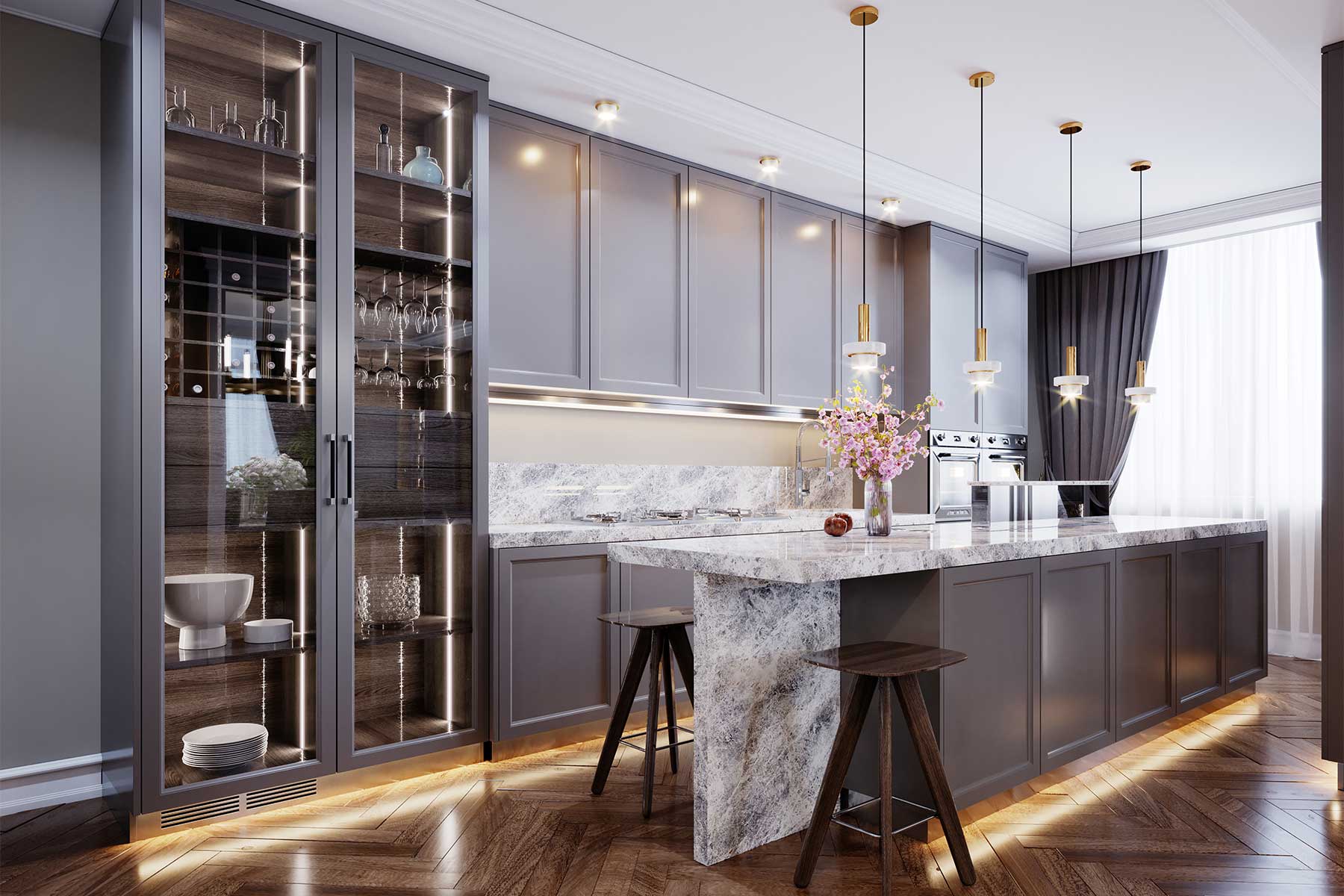
Renovating your existing kitchen or designing a whole new space? Alongside your cabinetry, choosing the right countertops will set the tone for your preferred finish. For example, the refined look of marble or more modern quartz with a hint of sparkle. What’s more, worktops also determine how your kitchen functions on a daily basis and how easy it is to maintain. With that in mind, if you need help choosing a suitable material, you’ve come to the right place.
At Claremont Kitchens, we fabricate and install an array of high-quality stone kitchen worktops. That includes both natural stone and robust composite alternatives, throughout Sussex, Surrey and Hampshire. We can also provide tailored advice on the best options for your project, starting with this handy guide. Read on as we outline the different kitchen worktop materials available, alongside their pros and cons to help you decide.
Why choose stone kitchen worktops over cheaper alternatives?
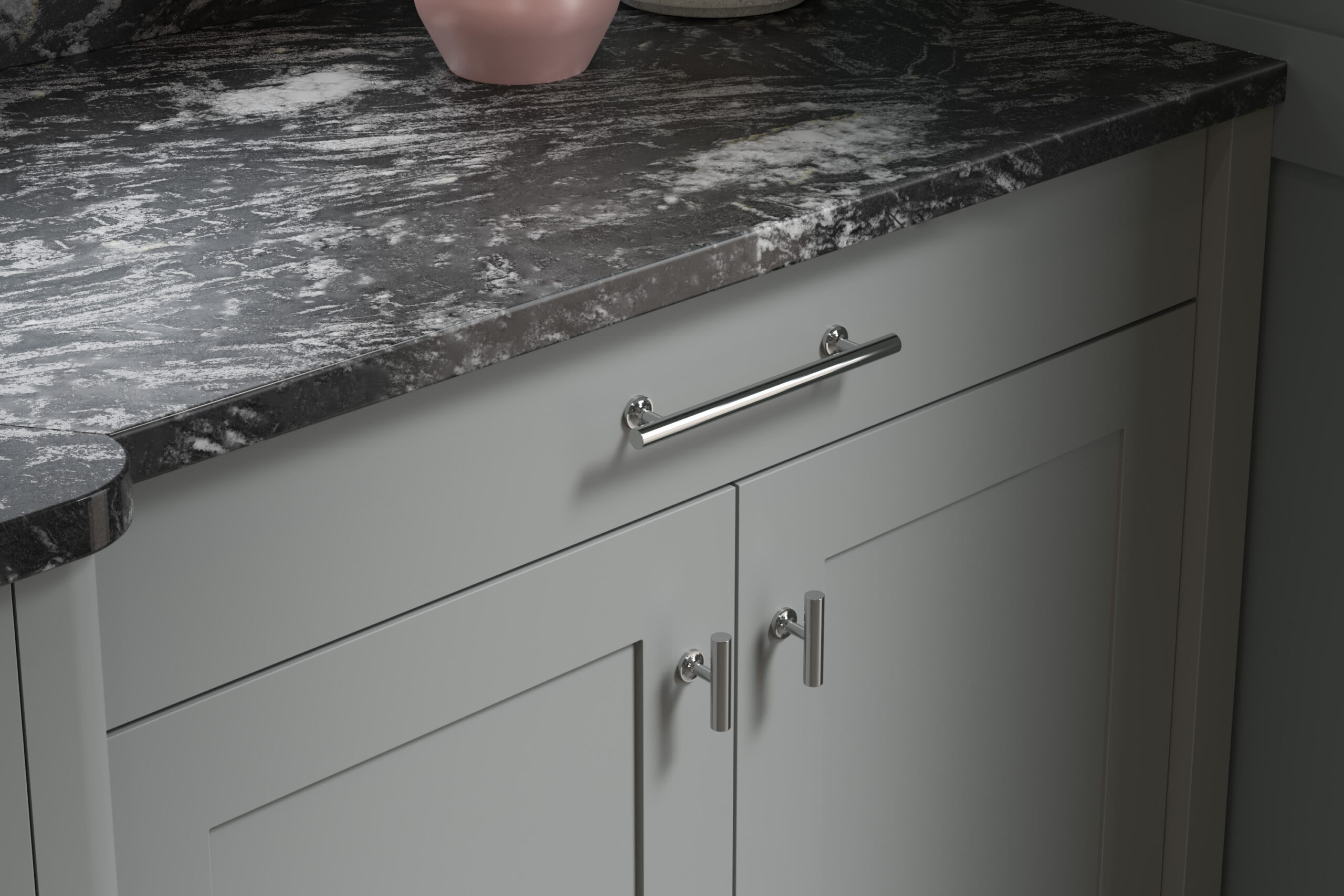
First, let’s consider why stone countertops are worth the investment. Whilst they are considered a premium choice, there is good reason for this. Cheaper laminate and wood options, for instance, can’t match the aesthetic appeal or longevity of stone alternatives. As well as offering a luxurious finish and potentially enhancing your home’s value, stone kitchen worktops are also extremely durable. In fact, they are able to withstand scratches, heat and everyday wear much more effectively over time. Typically, with less upkeep required.
Stone kitchen worktops: material options
Natural stone Kitchen worktops
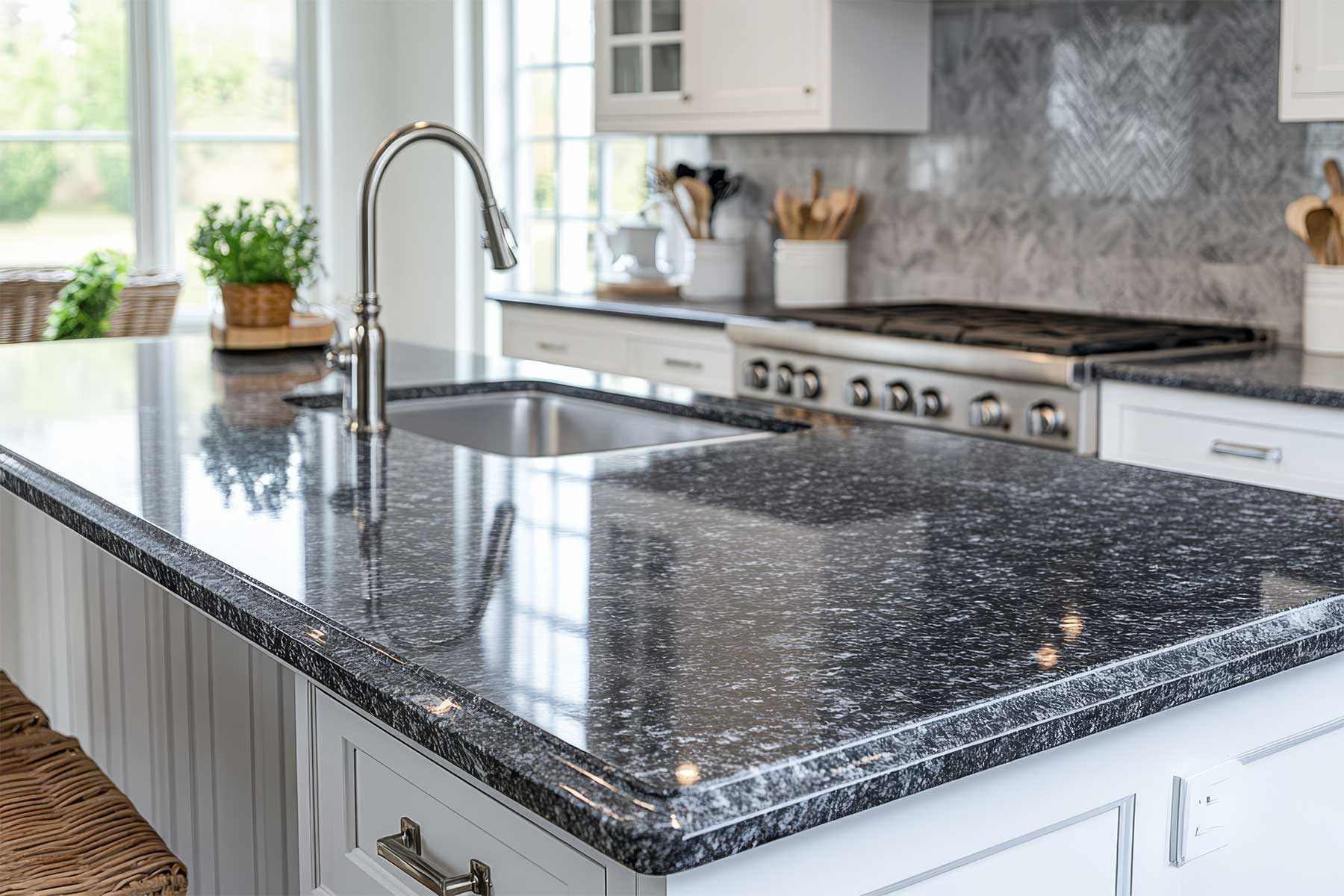
Quarried directly from the earth, natural stone worktop options like granite are especially hardwearing and heat resistant. As such, they are prized for their long-lasting durability. Plus, as no two slabs are ever the same, your worktop’s natural beauty will be entirely unique.
One of the most popular options is granite – one of the hardest natural stones on the market. This makes it ideal for frequently used kitchen worktops, and its blend of minerals also produces different colours and patterns. Better yet, granite stands up well to weathering and is UV resistant for use in outdoor kitchen areas too. Perfect if you enjoy a bit of alfresco dining!
However, there are some downsides to natural stone worktops. Firstly, despite its durability, this material is porous, so periodic sealing is needed to prevent stains. Good quality stone can also be pricey, and you’ll need to account for professional installation too due to its weight.
Best for: Natural stone worktops are a great choice for homeowners seeking timeless worktops that are as attractive as they are durable.
Marble kitchen worktops
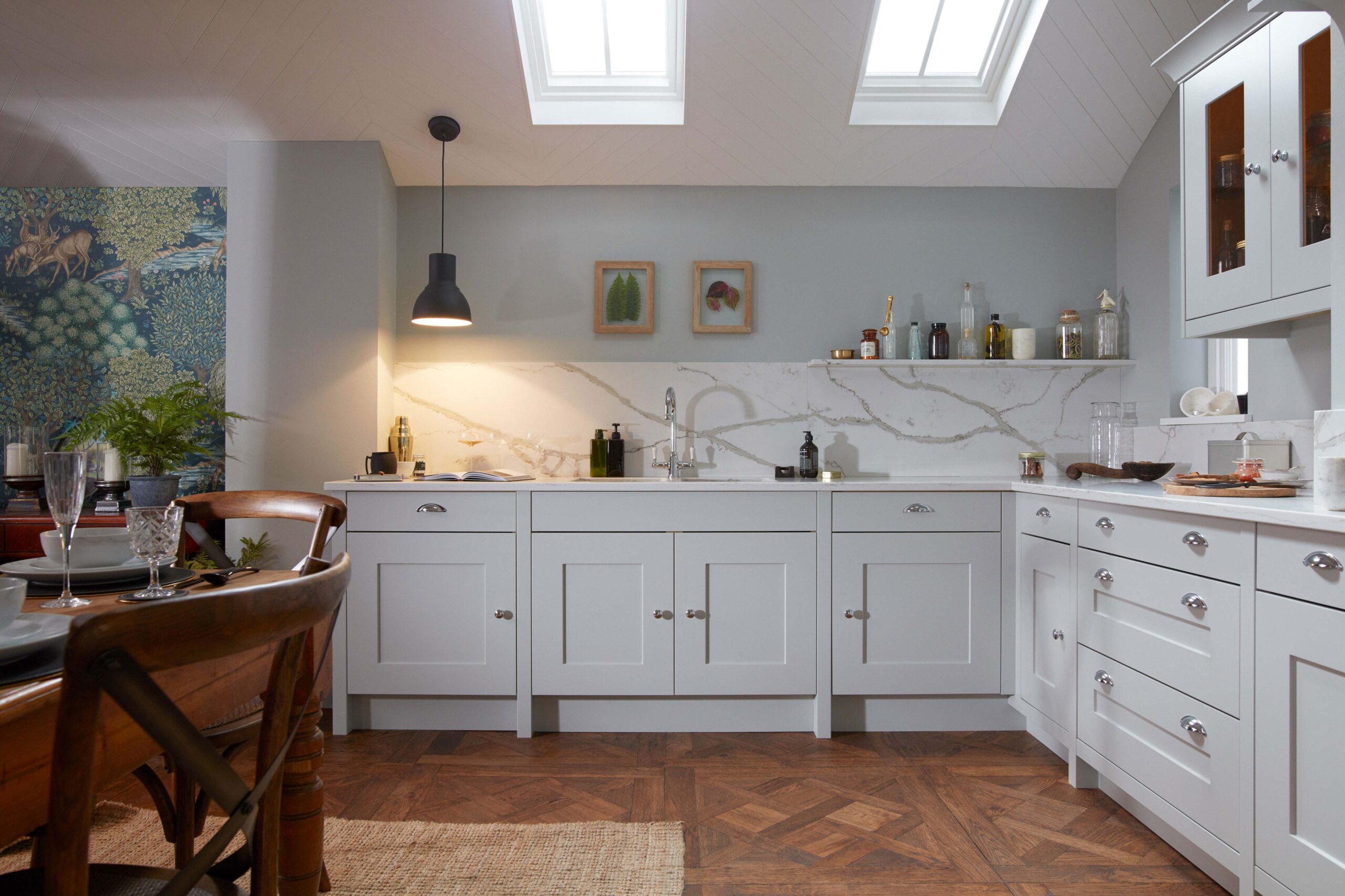
Another popular kitchen stone worktop material is marble. With its smooth, silky texture and striking natural veining, marble offers premium finish that complements both classic and contemporary spaces. What’s more, each marble slab used boasts individual patterns and colours to provide a one-of-a-kind centrepiece – think breakfast bars and kitchen islands!
Calacatta marble, for example, is characterised by bold veining on a crisp white background. Meanwhile, Carrara marble is a softer white with subtler blue-grey tones. Or, for a warmer aesthetic, Crema Marfil’s beige tones pairs beautifully with earthy colour palettes. And beyond aesthetics, marble’s naturally cool surface makes it ideal for rolling pastry and making dough.
However, marble is a softer and more porous stone than granite. As a result, it is more susceptible to staining, scratching and etching – particularly from acidic substances. Because of this, regular sealing and gentle cleaning is crucial to preserving marble worktops. For this reason, many people opt for modern manmade alternatives such as quartz and porcelain, which provide the look of marble but offer greater durability and do not need to be sealed.
Best for: Marble worktops are perfect for design-led kitchens where aesthetics are the top priority, and a little extra care doesn’t faze you.
Quartz kitchen worktops
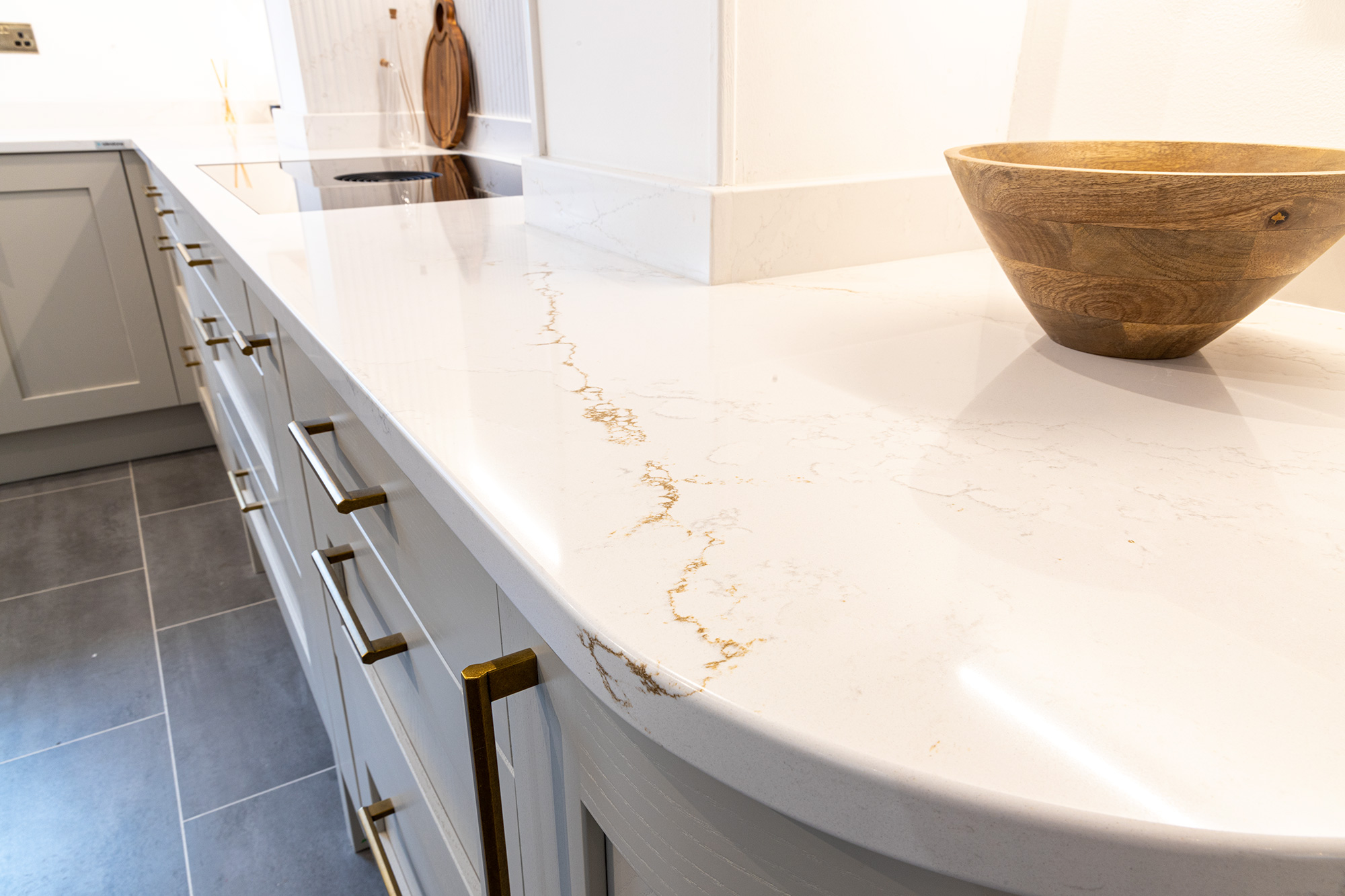
Quartz worktops offer the perfect balance between style and practicality. Engineered from 90-95% quartz crystals blended with resins and pigments, these sleek surfaces are designed to look just like natural stone. They come in a wide range of finishes and colours with a more consistent appearance than natural stone. Quartz is also stronger and easier to care for than natural stone alternatives. In fact, it is resistant to both scratches and stains, and doesn’t require sealing. Instead, the hygienic and non-porous surface repels moisture and bacteria.
Of course, there are some limitations when it comes to quartz kitchen worktops. Namely, this material is not heat proof, so hot pans should not be placed directly onto the surface. It also isn’t suitable for outdoor use, as direct sun exposure can lead to discolouration and fading. Plus, the manufactured design may lack the charm of natural stone for some.
Best for: Quartz worktops are ideal for homeowners looking for stylish, durable and low-maintenance surfaces.
Porcelain kitchen worktops
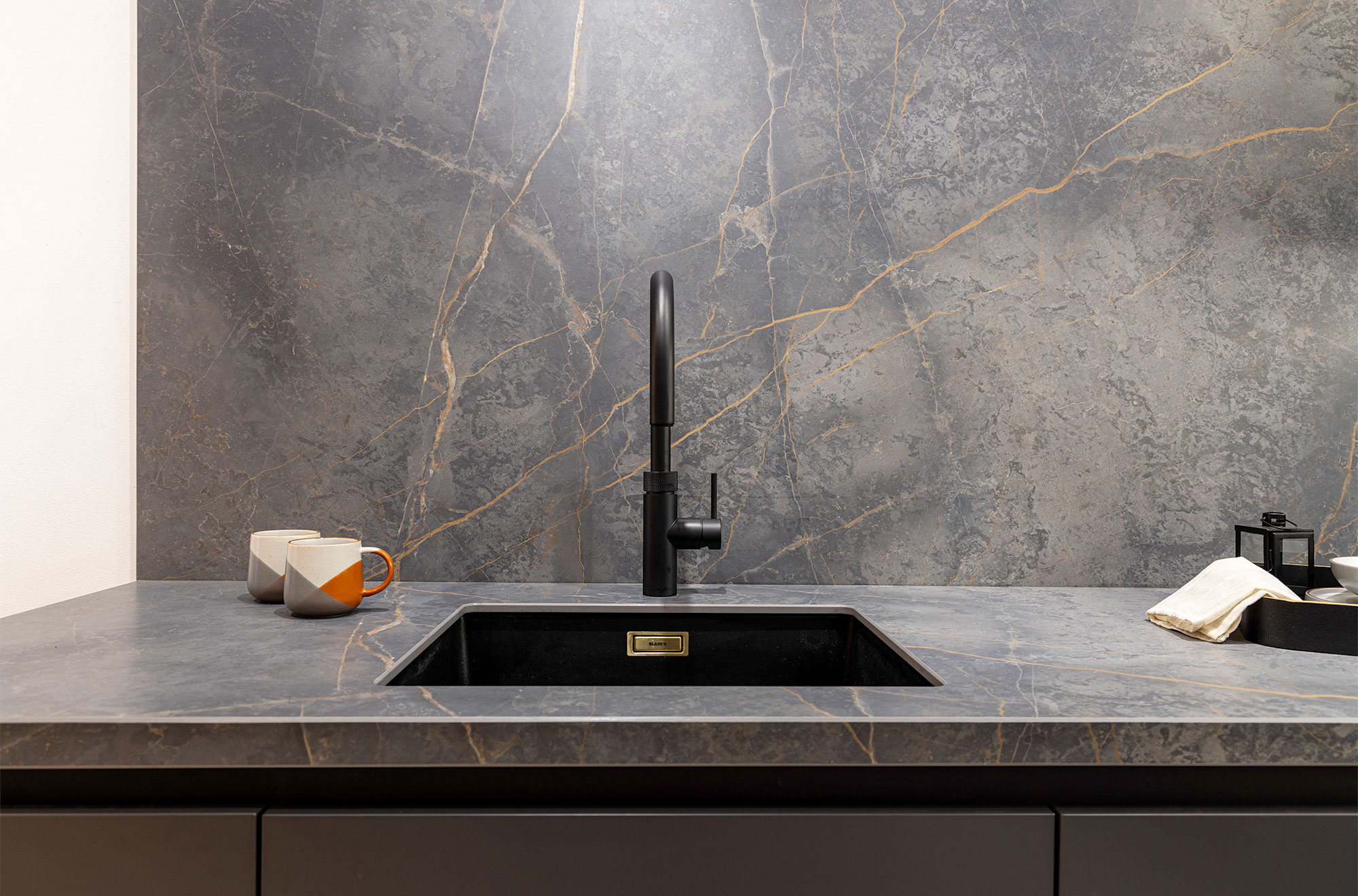
Porcelain and ceramic worktops are a contemporary, high-performing alternative to their stone counterparts. Made from refined clay and mineral compounds fired at very high temperatures, these ultra-compact surfaces are incredibly dense, strong and non-porous. Porcelain, in particular, is more robust than typical ceramic, making it a popular choice for kitchen surfaces.
In fact, porcelain worktops offer a number of practical benefits, including excellent heat, stain and UV resistance. And, with a standard thickness of 20mm, they are slightly lighter than most natural stone worktops. On top of that, ceramic countertops come in a host of designs. Thanks to advanced digital printing techniques, these surfaces can replicate the look of marble, concrete, wood, metal and natural stone to suit different interior styles.
The only real downsides to porcelain kitchen worktop are the upfront cost and fewer edge detailing options. This is because unlike with quartz and natural stone surfaces, ceramics feature a printed surface finish, rather a full-bodied pattern. And though rare, the edges can be slightly more susceptible to chipping, despite their robust makeup.
Best for: Sleek porcelain stone worktops are perfect for contemporary kitchens in busy family homes where easy-to-maintain surfaces are vital. Better yet, they can be used indoors or out.
Professional stone kitchen worktop measuring and installation
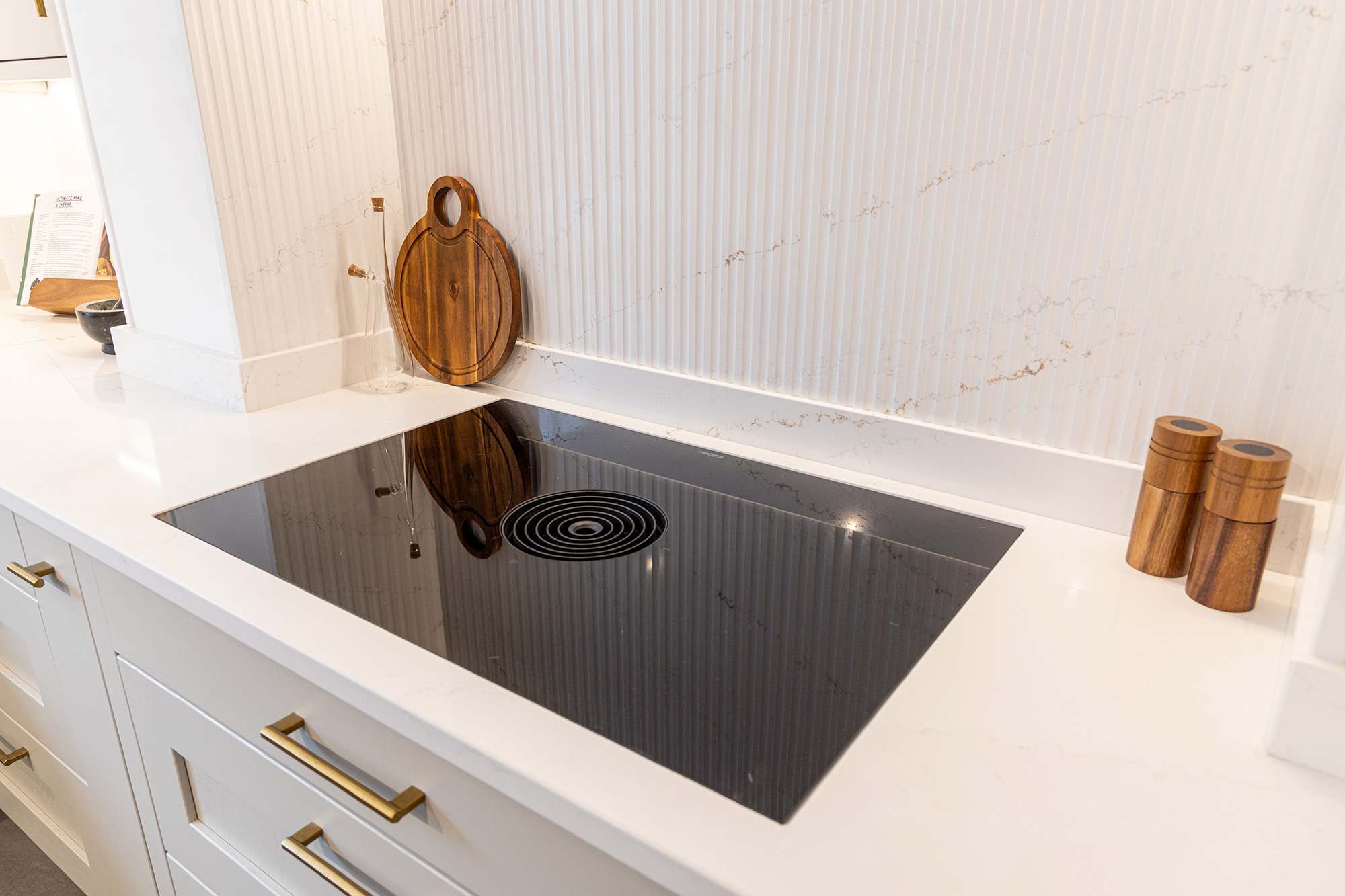
Chosen a material and ready to get your worktops fitted? At Claremont Kitchens, we offer a full templating and installation service to ensure your new stone counters look and perform exactly as they should. This involves a home visit to take measurements using an advanced digital laser system. And, as we have in house state-of-the-art stone fabrication capabilities, each design is completely bespoke. That includes shaping your kitchen worktops around existing sinks, hobs and architectural features, minimising seams for a neater finish.
Our professional measuring service also helps to cut down on material waste and avoids costly mistakes. Then during installation, our specially trained team will carefully handle, and secure your stone kitchen worktops with professional quality adhesives and jointing for best results. We can also supply and install splashbacks, wall cladding and bespoke decorative sone finishes for you new kitchen.
Visit our Midhurst showroom to view material samples in person or call 01730 923286 to discuss your ideas and budget. We look forward to hearing from you.


